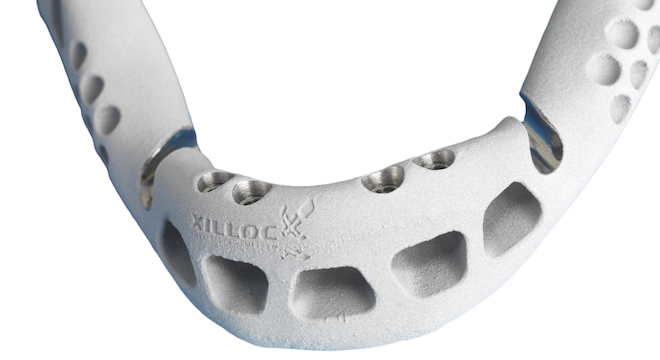Turns out 3D printers are good for way more than just wowing your friends. An 83-year-old woman with a bone-wasting infection became the recipient of the world’s first successful 3D-printed jawbone implant last year, the BBC reported on Monday.
The surgery took place in June, but the news of the medical breakthrough was first reported over the weekend, now that the patient has had time to successfully heal with no reported adverse effects.
As the BBC quoted the lead scientist involved in the operation:
“Shortly after waking up from the anaesthetics the patient spoke a few words, and the day after the patient was able to swallow again,” said Dr Jules Poukens from Hasselt University, who led the surgical team, “The new treatment is a world premiere because it concerns the first patient-specific implant in replacement of the entire lower jaw.”
Hasselt University’s Biomedical Research Institute achieved the medical first. But the university couldn’t have done it without Belgium 3D-printing company LayerWise, which fabricated the custom jawbone implant out of titanium powder, heated and fused together layer-by-layer with a laser from the company’s 3D printer. LayerWise is a firm founded in 2008 to lead the way in the burgeoning field of 3D printing, also known as “additive manufacturing” (AM).
LayerWise explained its AM process to create the jaw bone in a news release proudly touting the company’s accomplishment:
A highâprecision laser selectively heats metal powder particles, in order to quickly and fully melt to properly attach to the previous layer without glue or binder liquid. As layers are built successively, AM hardly faces any restrictions to produce the complex lower jaw implant structure. AM is used to print functional implant shapes that otherwise require multiple metalworking steps or even cannot be produced any other way.
“The building process took less than 12 hours,” said Peter Mercelis, founder and managing director at LayerWise, in an email to TPM, “The most difficult part was the combination of different techniques (printing process, CNC finishing of screw holes, digitally controlled coating process).”
See video of the fabrication process here:
Mercelis also credited Hasselt University’s Dr. Poukens with creating the idea for the fabricated jawbone implant, calling him a “a pioneer in the use of digitally designed medical implants.”
Indeed, Poukens previously performed a successful custom cranial implant surgery in 2007, installing a titanium plate into the skull of a young girl who lost a big chunk of the bone in a car wreck. That implant, fabricated by Fruth Innovative Technologien in Germany using an Arcam machine, was created in a similar process to the jawbone, using an electron beam gun to melt titanium powder into the necessary shape and size to perfectly match the missing piece of the girl’s skull.
But the jawbone was an even more complex and delicate operation.
“Fragments of bones have been replaced in the past, but this is the first case of a complete bone being replaced with a printed implant,” Mercelis told TPM.
Indeed, the entire operation isn’t even finished yet: Surgeons still have to go back into the patient’s jaw and remove “healing implants” located in the fabricated jawbone and then attach a dental bridge to the resulting holes, according to the BBC. The dental bridge will eventually be used to attach a set of false teeth, allowing the patient to chew again as normal.
One minor downside: The jawbone, though designed to be as lightweight as possible given the constraints of the titanium, is still heavier than actual bone at 107 grams, though only by one-third.
Still, there’s little denying that the 3D printing technology is of keen interest to the medical community and industry. Over the past three years alone, 3D printed implants have popped up as alternatives to dental implants, hearing aids and other orthopedic and cranial implants.
LayerWise’s founder Mercelis is confident his company will be among those spearheading the charge, including developing “implants integrating porous materials that allow integration with the patient’s own bone, biodegradable implants incorporating human bone cells and large scale application of Additive Manufacturing for the production of standard orthopedic implants.”









